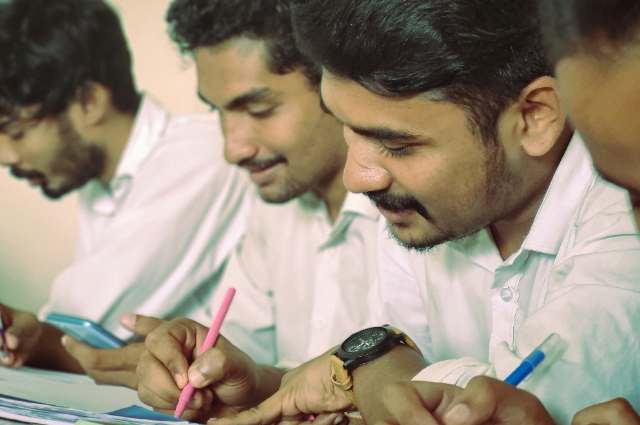
Photo by Aswin Thomas Bony on Unsplash
Teachers are here and there being recruited but you must be thinking that might be adding to the literacy rate across students. Is it so?
Absolutely, No!
The pupil-teacher ratio will lose balance and that shall crumble the educational system of the country. Quite shocking?
Let's get into a news report to know more.
The Ministry of Education has been conducting the annual 'All India Survey on Higher Education' (AISHE) since 2010-11 and collecting data on higher education institutions across India including information on teachers, infrastructure and examinations, etc.
The All India Survey on Higher Education 2021-22 reveals that around 7,000 students have been added since 2014-15 and considerably, student enrolment has again grown by 26.5%. It was made public on January 25 and has been recently into discussions due to the major takeaways that come with it.
It's comes as a good revealation that the women's enrolment in higher education has increased. They are seen to be more in numbers than men, especially, in the PhD segment. Over a lakh researchers in the country are primarily women candidates.
At the same time, private institutions parallely have again risen. Problem comes when this institutions enter into the educational interest not with the aim of social welfare instead the goal is primarily profit maximisation. The fees structure is high and their infrastructure and strength is good enough but not everything works transparently there.
This also signals that the government is either incapable or isn't even paying heed before handling such a huge responsibility to the private players. Consequently, students from a lesser privileged background fail to scres them and hence, a corresponding increase in government colleges is much needed.
The government is again disinterested in maintaining the student-teacher ratio. More than 50-60 students are alloted to a teacher to manage single-handedly.
The noble and the novel aims of the 'New Education Policy', it suggests that the government attitude's to education is skewed.
Another problem that was previously guessed discussed in the 'Annual Status of Education Report' which has underlined that in the urban high school students, admissions in Humanities is significantly more than science, engineering etc. Majority of the states and UT's note a decline in average enrolment per college. Enrolment becomes a key indicator of higher education in India.
The data on enrolments as per various social groups like the Scheduled Castes and the Scheduled Tribes is rising.
Regional disparities in access to higher education has widened. Concentration of institutions in one areas has exacerbated the inequalities.
Clearly, higher educational dimensions tend to focus more on inclusion and diversity. Women who had been earlier disadvantaged and underrepresented are not quite getting a stand for themselves.
The finer details reflect the sociological phenomenon of glass ceiling where in the top positions have been donned by the male faculty members and the lower positions are somewhat subordinated for female staff.
The Report has been successfully presented in a manner so that it's able to address the problems and concerns of higher education with all the required things.
. . .
Reference:
- telegraphindia.com
- factly.in
- aishe.gov.in
